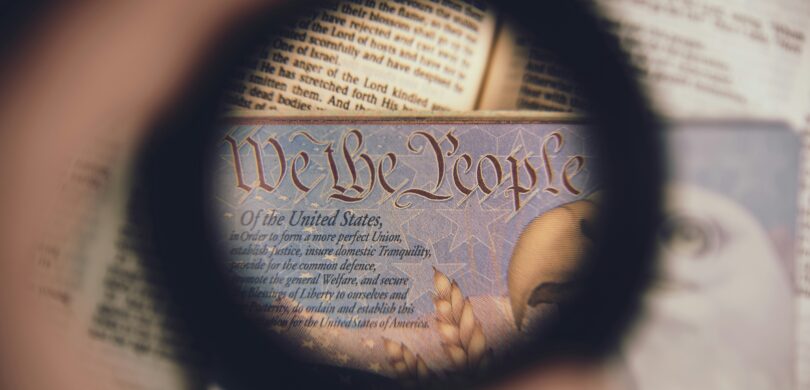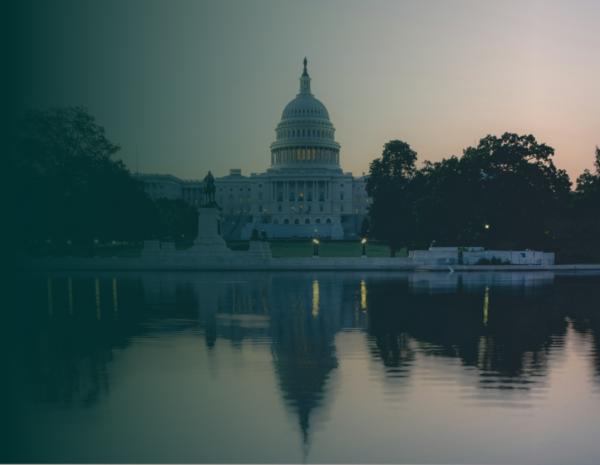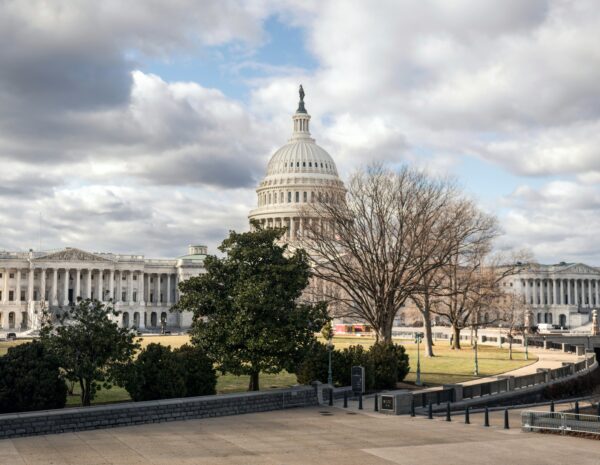While the United States Constitution was not written until 1787, American constitutional history began well before then. From the nation’s beginnings as a collection of British colonies to its declaration of independence and beyond, many historical developments played a role in the development of the Constitution and constitutional history from 1787 until now.
The Constitution is the supreme law and foundation for the government of the United States of America. It gives an outline of the government’s structure, assigns separate powers to its three branches, and protects the rights of America’s people. To understand constitutional history, it helps to go back to our nation’s colonial roots.
Early American Colonies and Their Role In Constitutional History
While the 13 American colonies were under British control, they each had their own governmental system. These were structured based on the type of colony:
- In royal colonies, the king of England directly appointed a governor. Colonists elected a representative assembly with some legislative power.
- Proprietary colonies fell under the authority of a proprietor, who had been given the land in exchange for service to the crown. This individual appointed the governor.
- Charter colonies were owned by companies. They were allowed more self-governance, including the election of governors and legislators. They could create their own laws, as long as they did not conflict with those set by the English government.
In practice, the colonies were left to manage most of their own affairs. They began to get used to representative government and the enjoyment of certain freedoms. The colonists’ British background reinforced this. British philosophers John Locke and William Blackstone, along with other Enlightenment thinkers, argued for individual freedoms and against oppressive governments. The framers of the Constitution took inspiration from Britain’s Magna Carta, a charter of rights signed by King John of England in 1215. Their Bill of Rights was inspired in part by the English Bill of Rights of 1689. Both include the freedom of speech, the right to bear arms, the right to a jury trial, and the prohibition of cruel and unusual punishment.
As independence grew nearer, a few colonies drafted their own constitutions. Along with state constitutions drafted later, these would greatly influence the Constitution of the United States.
The Road to Independence and The Development of Constitutional History
By the 1760s, colonists began to push back against what they saw as unfair British control and taxation. The colonies were not directly represented in Parliament, leading to protests with the slogan, “no taxation without representation.” After the British Parliament placed new tariffs on a variety of imported goods, tensions erupted in violence. During the Boston Massacre of 1770, British soldiers shot into a crowd of a few hundred angry colonists, killing five.
In 1773, Boston colonists dumped an entire shipment of taxed tea into the harbor. Parliament responded to the Boston Tea Party by passing the Intolerable Acts. These acts punished Massachusetts by taking away the colony’s charter and limiting its self-governance.
Great Britain had hoped this would discourage any more protests or rebellions. It did the opposite. The Congress published a list of the colonies’ grievances and called for a boycott of British goods. It also petitioned the king, who rejected the colonies’ demands. The Congress also petitioned the king, who rejected its demands.
As the Revolutionary War began, the Second Continental Congress met in 1775 and discussed breaking away from British rule. In 1776, Congressional delegates drafted and passed the Declaration of Independence.
This Declaration expressed several of the new nation’s principles and values, including:
- Natural rights — people are born with certain rights that should not be violated
- Popular sovereignty — a government gets its power from the people it governs
- Social contract — people agree to give up power to their governments in exchange for protection of their freedoms
- Rule of law — the laws of the land apply to everyone, and no one is above them
The Articles of Confederation
At the same time they declared independence, Congressional delegates began drafting a document to form the government of the United States of America. The result was the Articles of Confederation and Perpetual Union, which took effect in 1781.
The Articles of Confederation granted much power to the state governments and little to the federal government. There was no national executive and no central court system, only a legislative body. The former colonists wanted to avoid a national government with too much power.
A weak central government brought its own set of problems, though. Under the Articles of Confederation, the federal government could not levy taxes. Only states had this power. Congress could only request money from the states. States often did not fulfill these requests, leaving the federal government unfunded and unable to pay its debts.
The national paper currency lost its value, so some of the states started printing their own. This complicated trade between the states and with other countries. States also began to tax items from other states, putting up barriers to trade within the new nation. The federal government had no real power to regulate foreign or interstate commerce.
Congress also failed to repay those who fought in the Revolutionary War as it had promised. This included farmers in western Massachusetts, who faced large debts and rising state taxes. These farmers revolted against their state government in 1786 and 1787. Massachusetts had to stop Shays’ Rebellion on its own, because the federal government didn’t have enough money for army recruitment.
A mix of these factors led people to call for a revision of the Articles of Confederation. This form of government had to change.
The Constitutional Convention of 1787
Delegates from 12 of the 13 states met in Philadelphia for the Constitutional Convention of 1787. Rhode Island did not send any delegates. They elected George Washington, former commander of the Continental Army, as president of the convention. Some delegates aimed to revise the Articles of Confederation, while others wanted to create a new constitution. Several brought forward competing plans.
The New Jersey Plan
The “New Jersey Plan” was a proposed revision allowing state governments to keep most of their power. It would give the federal government greater power to levy tariffs, collect taxes, and regulate interstate commerce. The Confederation Congress would remain unicameral, with one chamber, and each state would have one vote.
The Virginia Plan
James Madison was one of the delegates calling for a new form of government. His “Virginia Plan” proposed a strong national government and weaker states. It called for a bicameral legislature with two chambers, both apportioned by population. The lower house would be directly elected by the people. It would then elect members of the upper house from candidates nominated by state legislatures.
The Connecticut Compromise
Delegates from large states liked the idea of apportioning Congress by population. Those from small states protested, wanting equal representation for each state. The “Connecticut Compromise” used both ideas. Representation would be equal in the Senate and proportional in the House of Representatives.
The Three-Fifths Compromise
This still didn’t settle the matter. Southern delegates wanted slaves to count for representation, while northern states did not. They eventually agreed on the “Three-Fifths Compromise,” which said three-fifths of a state’s slave population would count when apportioning representatives to the House.
As the debates went on, the form of the United States government took shape. It would be a representative democratic republic with three branches: legislative, executive, and judicial. A system of checks and balances would help each branch ensure that the others do not gain too much power.
The Ratification Process
The new U.S. Constitution still had a long way to go. Delegates signed the document and presented it to Congress, who approved it. For it to become law, at least nine of the 13 states needed to ratify it. Each state held conventions to discuss the proposed new government and take a vote.
Those who supported the new Constitution were called federalists, while anti-federalists opposed it. The anti-federalists were concerned about the strength of the proposed national government. They began to publish anonymous articles in the press criticizing the Constitution.
In response, congressmen James Madison, Alexander Hamilton, and John Jay wrote a series of anonymous essays arguing in favor of the Constitution. These 85 essays became known as the Federalist Papers. They explained how the new government would work and the reasoning behind the Constitution.
Still, some states struggled to ratify the Constitution. Many people worried that it did not do enough to protect citizens’ rights and liberties. George Mason of Virginia and Elbridge Gerry of Massachusetts had proposed adding a Bill of Rights, but most Constitutional Convention delegates did not agree. Later, the Massachusetts, Virginia, and New York conventions would agree to ratification only if certain amendments were added. The U.S. Constitution came into force in 1789 with 11 states included.
During the first United States Congress, James Madison proposed a series of constitutional amendments. Congress approved 12 amendments and the states ratified 10 of them. Together, these 10 amendments form the United States Bill of Rights. They include protections for the freedom of speech, freedom of religion, and other civil liberties. More amendments have been proposed and added over time, meaning constitutional history continues to this day.
Get Started With Plural
Plural is the legislative tracking tool of choice for those looking to learn more about the United States government and its history. Plural offers legislative data from current and past sessions in each state, as well as committee, staffer, and hearing data. Interested in getting started? Create a free account today!



